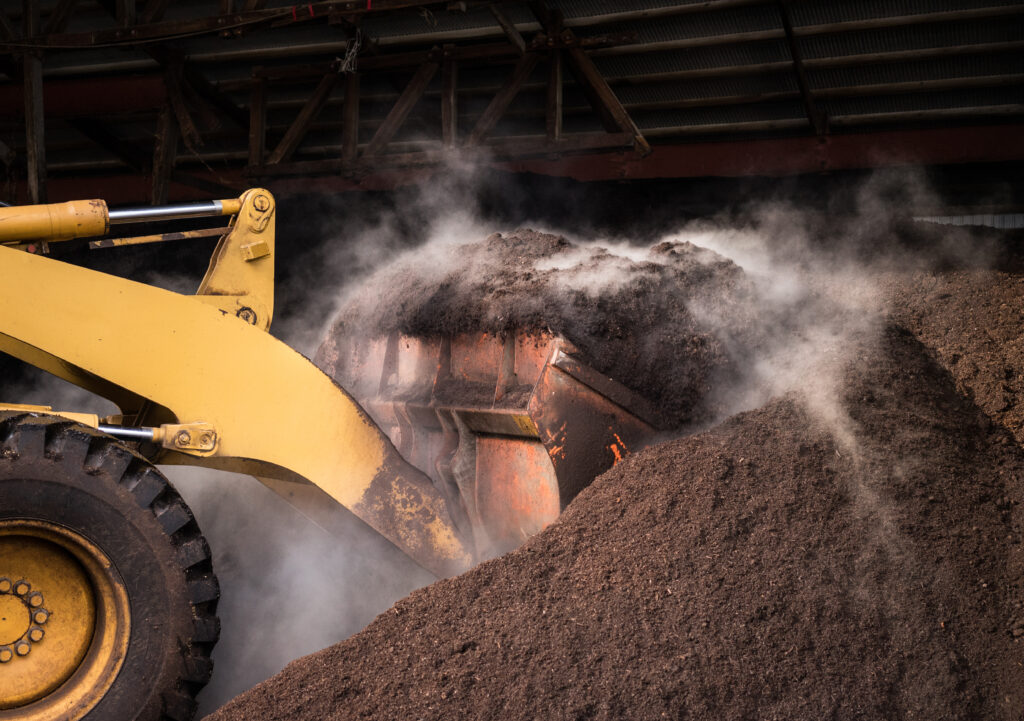Plant-Based Packaging: Types, Applications, and Environmental Impact
Share:
Welcome to Thomas Insights — every day, we publish the latest news and analysis to keep our readers up to date on what’s happening in industry. Sign up here to get the day’s top stories delivered straight to your inbox.

Plant-based packaging is formed using renewable materials derived from plants. Thanks to a growing consumer demand for sustainable packaging materials, stricter government regulations on plastic packaging, and various technological innovations, the market for plant-based packaging is fast-growing.
Indeed, the global plant-based packaging market is anticipated to increase from $371.4 billion in 2022 to $737.6 billion in 2030.
5 Types of Plant-Based Packaging Materials
Different types of plant-based packaging include:
1. Bagasse
As a by-product of harvesting sugarcane, bagasse is a naturally renewable resource. The material is workable and durable; can hold hot, wet, and oily foods; and is grease-resistant, which means it has wide applications in packaging for hot and cold foods.
2. Polylactic Acid
Polylactic acid (PLA) is a bio-sourced plastic made using extracts from plants including sugarcane and cornstarch. This bioplastic is most often used to make plastic films and food containers, substituting petroleum-based plastics like PET (polyethylene terephthalate).
3. Paper and Paperboard
Paper and paperboard packaging is made using virgin or recycled pulp. The former creates a more durable end-material, which can be used for packaging products including greaseproof paper and rigid boxes.
Recycled pulp comes from waste paper products, such as old containers, newspapers, and magazines. Because the end-material’s fibers are weakened during the recycling process, this pulp is more likely to be used for less sturdy items, such as french fry boxes. Packaging produced using 100% recycled paper is referred to as molded fiber.
4. Seaweed

Seaweed plantation. Image courtesy of Cavan-Images / Shutterstock.com
Seaweed, which can be harvested with very minimal environmental impact, is increasingly being used to create plastic-like packaging products. London-based start-up Notpla, for example, has developed a water bottle, known as Ooho, which is made from algae and calcium chloride.
In addition, seaweed packaging is most-often edible, which means it can be consumed by humans after use or repurposed as feed for farm animals.
5. Cellulose
It might come as a surprise to learn that the thin, plastic-like material known as cellophane is both plant-based and fully biodegradable.
Cellophane is made from cellulose, which is found inside the cell walls of plants and consists of a long chain of sugar molecules. When several of these chains are bonded together they form microfibrils, which are rigid.
Not only does cellulose provide the basis for an environmentally friendly form of packaging, but cellophane is also moisture, oil, and heat resistant. Better still, it is the most plentiful biopolymer in the world.
Applications of Plant-Based Packaging
Plant-based plastics and other forms of eco-packaging can be categorized as “rigid” or “flexible.”
Rigid packaging is formed of heavier, stronger materials, and might consist of cardboard boxes or bioplastic bottles and containers. Although rigid packaging is typically more expensive and more energy-intensive to manufacture than flexible packaging, it is also better quality and more resilient.
Flexible packaging refers to all types of malleable packaging, including sachets, pouches, stretch film, and seal bands. Flexible packaging is cheaper to produce, easier to use, and more environmentally friendly.
The applications of plant-based packaging span multiple industries. In the food and beverages industry, for example, it is used to preserve and prolong the shelf-life of perishable products such as coffee, baked goods, meats, and fish. In healthcare, it prevents the contamination and tampering of vaccines, drugs, and other medical products during transportation and storage.
Industrial businesses use plant-based packaging to protect equipment and machinery, as well as to package consumer products including everything from toiletries and cosmetics to electronics and appliances.
Environmental Impact of Plant-Based Packaging
Plastic packaging accounts for 36% of the 400 million metric tons of plastic that are produced annually. This includes the one million plastic bottles purchased every minute and the five trillion plastic bags used every year.
Regrettably, just 9% of plastic waste is recycled. This means 14 million tons of plastic end up in the ocean every year, and 27 million tons end up in landfills. These single-use plastic products have catastrophic environmental, social, economic, and health consequences. Plastic pollution is destroying natural habitats, reducing ecosystems’ ability to adapt to climate change, entangling and harming marine life, contaminating drinking water, and devastating tourist industries.
The extraction and transportation of fossil fuels used in plastic production results in billions of tons of greenhouse gas (GHG) emissions, which equates to 3.4% of global emissions. The GHG emissions associated with the manufacture, use, and disposal of single-use plastics is expected to grow to 19% of the global carbon budget by 2040.
Plastic packaging alternatives are made from plant-derived molecules — rather than petroleum-derived molecules — which means they can reduce the world’s dependence on fossil fuels and reduce GHG emissions. In addition, plant-based packaging is often compostable or biodegradable, which means a reduction in the amount of waste in landfills and oceans.
6 Benefits of Plant-Based Packaging
The benefits of plant-based packaging include:
1. Compostable and Biodegradable

Bulldozer churning compost. Image courtesy of Derek Yamashita / Shutterstock.com
While traditional plastic packaging might take centuries to degrade, biodegradable plastics and compostable plastics can be reduced to nothing in a matter of months. Cellulose film packaging, for example, will degrade in 28-60 days if the product is uncoated, and 80-120 days if the product is coated. In water, this product can degrade in as little as 10 days.
2. Sustainable
While fossil fuels are a finite resource, most plant-based materials are renewable resources. An increasingly popular material choice in product packaging is seaweed. Not only is this resource capable of growing 60 times faster than land-based crops, but it can also capture up to 20 times more carbon per acre than forests.
3. Less Resource-Intensive Than Plastic
Plastics derived from fossil fuels are incredibly energy-intensive, since a lot of refining is required throughout the production process. Sustainable packaging solutions are typically produced with fewer raw materials and less energy. PLA production, for example, uses 65% less energy and generates 63% fewer GHGs.
4. Functional and Aesthetically Pleasing
Plant-based packaging is increasingly sophisticated. Plant-based food packaging, for example, can prevent leaks and spills, provide insulation, reduce food waste, and eliminate unpleasant odors.
Meanwhile, for the transportation of medicines and vaccines, secure packing seals that are plant-based provide reassurance to the end-customer that their products have not been tampered with.
The aesthetic of product packaging is also important, particularly for the food and beverages industry. Many plant-based packaging products are simple and sturdy in design, signaling a high-quality product.
6. Cost-Effective
There is an abundance of plant-based materials, which means they are not cost-prohibitive to acquire. In addition, these materials are often fairly lightweight, which reduces shipping and storage costs.
5 Challenges and Limitations of Plant-Based Packaging
Some of the challenges associated with plant-based packaging include:
1. Scalability
The production of millions of tons of plant-based packaging that is not of the seaweed variety requires vast amounts of land on which to grow suitable crops. This raises the question, is it preferable to grow crops to feed livestock and address world hunger or to produce huge amounts of plant-based plastic products?
2. Cost
Plant-based packaging is an emerging market. Though the plant-based materials themselves are widely available, the manufacturing facilities required to convert them into usable packaging products are not.
Indeed, it’s estimated that plant-based plastics cost two to three times more to create than traditional plastics. Even in a world where production costs were significantly less, many organizations would be reluctant to make the switch to plant-based packaging due to the initial upfront costs.
3. Lack of Recycling and Composting Infrastructure
In the right conditions, many types of plant-based packaging can fully — and quickly — decompose, which is why they are considered far more environmentally friendly than their fossil-fuel-based counterparts.
However, the specific conditions required for compostable packaging are typically a combination of high heat and moisture. As well as composting being energy-intensive, the recycling infrastructure required to process these materials efficiently and at scale is not yet present. As a result, plant-based plastic is being sent to landfills, along with other waste.
4. Lack of Performance
Plant-based plastics are of increasingly high quality, but they only sometimes deliver durability and functionality. For example, several plant-based products are sensitive to moisture and do not provide an effective barrier to the outside environment.
5. Reinforces a Single-Use Mindset
There is a belief that presenting a good alternative to single-use plastics simply reinforces a wasteful mindset and creates demand for unnecessary resources. Some argue that it is far better to push waste reduction initiatives and introduce regulations that seek to combat single-use products altogether than to further develop plant-based plastics.
Industry Adoption and Success Stories
Several brands are investing in plant-based packaging solutions as part of their sustainability initiatives.
Beauty company, Pangea, for example, was the first company in the world to use sugarcane bio-resin to develop compostable packaging that works to reduce the company’s carbon footprint.
JUST Water packages its product in paper boxes and aluminum bottles, sportswear company Puma has designed a shoe box that doubles as a bag, cleaning products company Method is producing sustainable pouches, and the sustainable shoe company Allbirds makes its shoeboxes using 90% post-consumer recycled material.
More organizations will follow suit in the coming years. Back in November 2018, more than 250 brands, including L’Oreal, Mars, PepsiCo, The Coca-Cola Company, and H&M, signed an agreement to eliminate plastic waste and pollution at the source.
Regulatory Landscape and Standards

Recycle symbol on box. Image courtesy of Skorzewiak / Shutterstock.com
All packaging products in the United States are subject to legal regulations.
For example, plant-based packaging must adhere to stringent health and safety regulations. Manufacturers are required to carry out a series of safety tests and submit key data points to the Food and Drug Administration (FDA) to gain approval to package food, beverages, and medical products.
Regulations are also used to classify packaging products and promote sustainability. The National Environmental Policy Act (NEPA), for example, requires that the FDA evaluates the environmental impact of product packaging, while the Environmental Protection Agency (EPA) is tasked with regulating the disposal of packaging waste. As a result of initiatives like these, the use of some packaging materials has been restricted and minimum recycled content has been specified for several products.
The Federal Trade Commission’s (FTC) Guides for the Use of Environmental Marketing Claims prohibits false claims about a product’s recyclability, the content of recyclable materials, or its degradability and biodegradability.
The universally understood graphic symbols seen on product packaging are most-often used to inform the end-customer about product quality, handling requirements, and hazards. But, increasingly, product packaging features symbols relating to sustainability. The mobius loop recycling symbol, for example, indicates that the packaging can be recycled, while compostable packaging, which can be industrially composted by the customer’s local authority, is signified with an apple core symbol.
Packaging products can also be Biodegradable Products Institute (BPI) Certified, a third-party certification that verifies an item can compost completely and safely in commercial composting operations and meet ASTM D6400 or D6868 conditions for compostability.
Collaboration and Innovation in Plant-Based Packaging
Thanks to exciting collaborations and new innovations, the plant-based packaging industry is fast evolving.
Noissue is committed to delivering accessible sustainable packaging solutions to businesses worldwide, Paper Mart has developed a collection of eco-friendly packaging, and RePac has developed reusable packages made of durable and recycled polypropylene.
Amcor, which has pledged to develop all recyclable or reusable packaging by 2025, has partnered with Plantic Technologies to develop a biodegradable package, while Bemis has developed a bio-based polymer film packaging material for the lawn and garden market.
Finally, the Mondi Group — a global leader in paper and packaging — partnered with Mars to develop a bio-based chocolate bar wrapper.
The Future of Plant-Based Packaging
The 2021 Global Buying Green Report indicates that 67% of consumers think of recyclable packaging as an important part of their purchase decision. Growing consumer demand — coupled with a rise in government regulations, certifications, and incentives — means that the plant-based packaging market is likely to expand quickly in the coming years.
Of course, several challenges remain — particularly surrounding scalability, affordability, and product quality. But packaging manufacturers, brands, and governments are investing in solutions to drive effective and efficient production and to ensure these products are being correctly disposed of. Their continued efforts will propel the industry forward.







